The Hong Kong Arts Development Council-produced Arts • Tech Exhibition series, now in its second edition, is a boon for artists looking to test-drive new ideas. Chitralekha Basu reports.
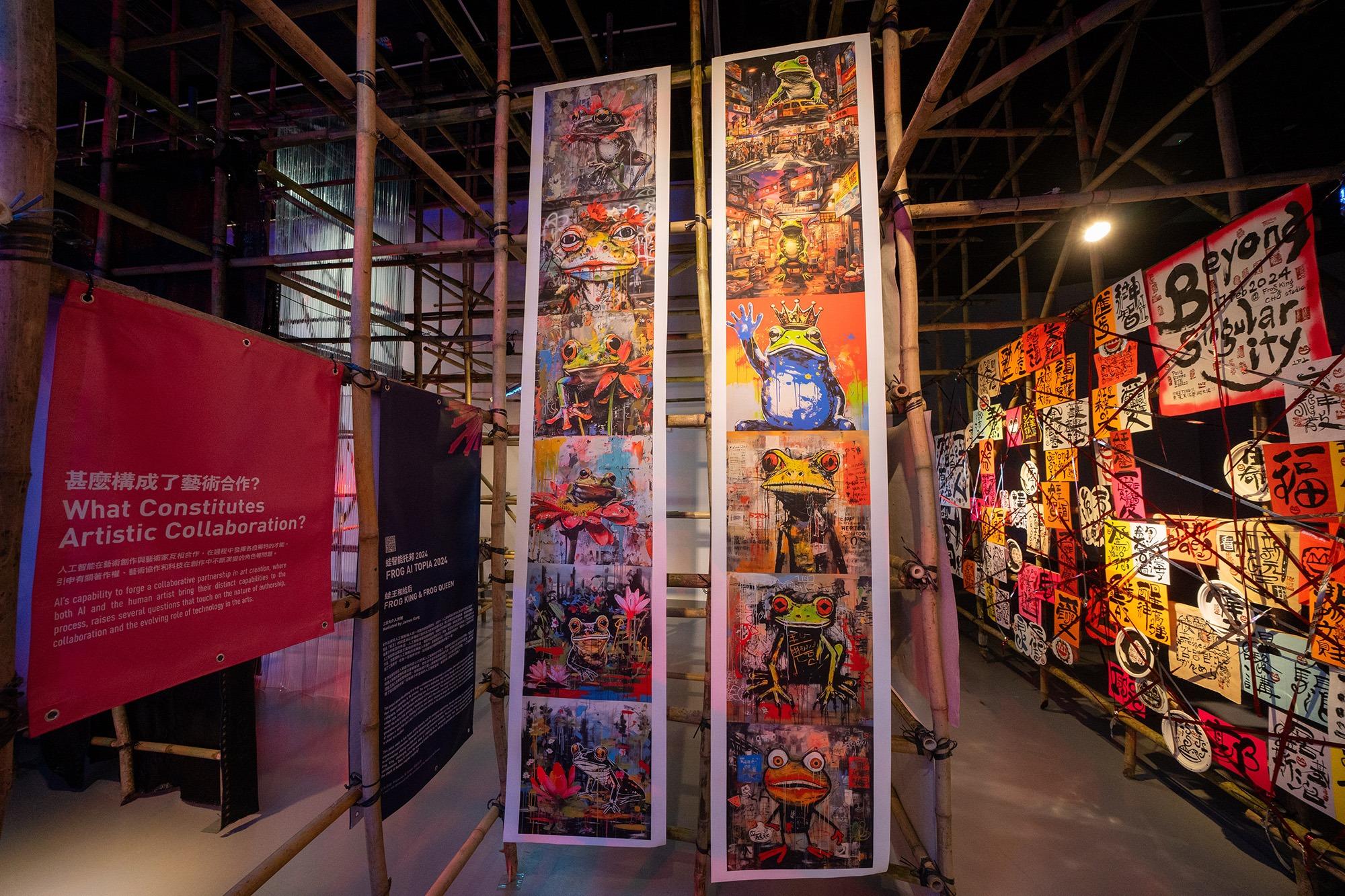 Frog King’s signature frog paintings, enhanced by AI-generated elements. (PROVIDED TO CHINA DAILY)
Frog King’s signature frog paintings, enhanced by AI-generated elements. (PROVIDED TO CHINA DAILY)
In her 2020 Policy Address, Hong Kong’s then-chief executive, Carrie Lam Cheng Yuet-ngor, had announced a generous grant of HK$100 million ($12.8 million) toward developing projects that result from a synergy between art and advanced technology. The pledge to support artists trying to navigate their ways through an increasingly, and irreversibly, technology-driven world continues to be honored in this city. The Hong Kong Arts Development Council, which oversees the distribution of public funds allocated to art, has produced two editions of its Arts • Tech exhibitions, and, according to its chief executive, Winsome Chow, is planning a third.
The initiative has proved to be a boon for both artists working in the interstices of art and technology as well as those more used to traditional media. While the former group is provided with, as Chow says, “a platform to experiment, create and achieve breakthroughs”, for the latter, it’s an opportunity to find out how the application of advanced technology can impact their usual practice.
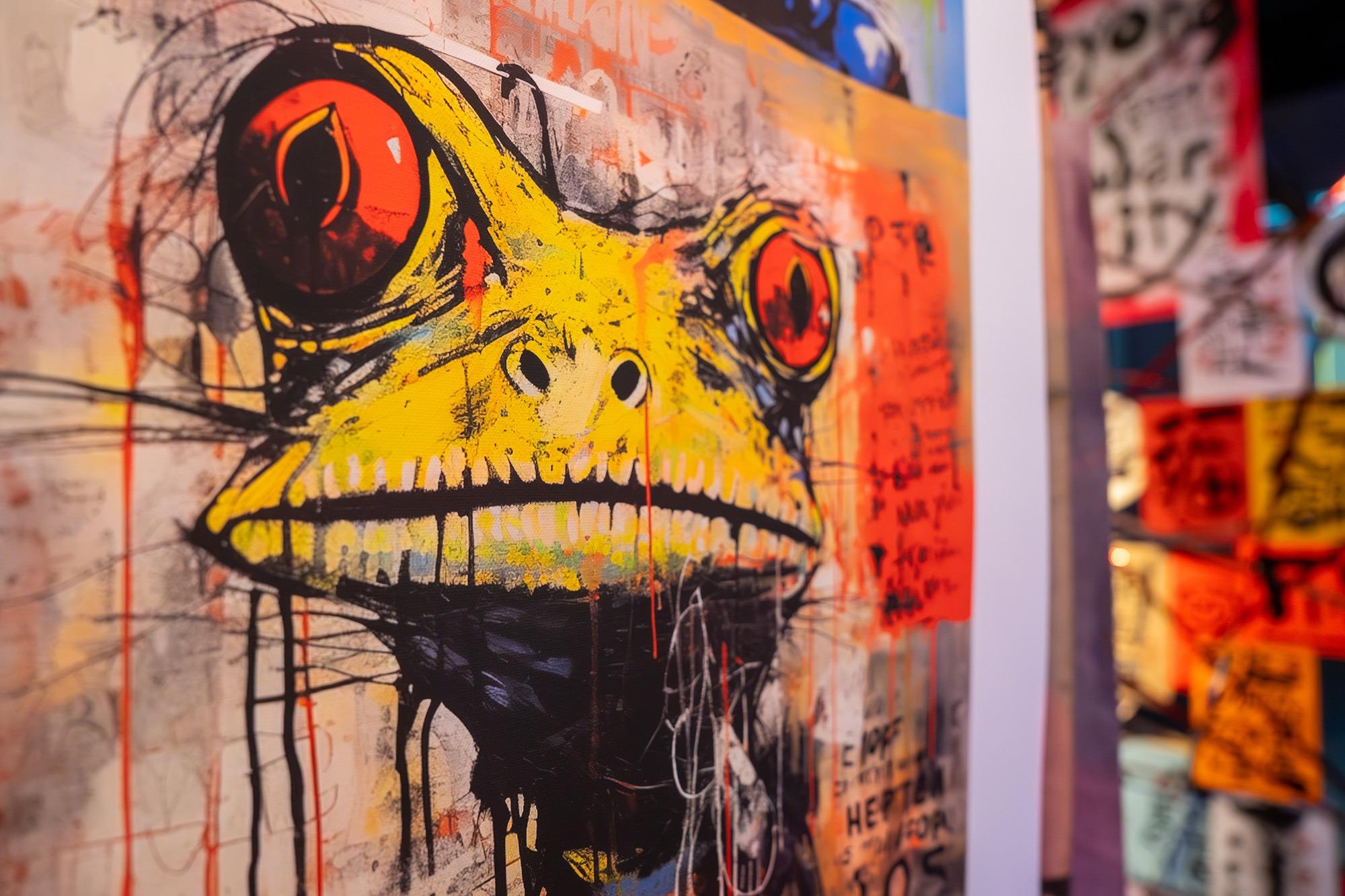 Frog King’s signature frog paintings, enhanced by AI-generated elements. (PROVIDED TO CHINA DAILY)
Frog King’s signature frog paintings, enhanced by AI-generated elements. (PROVIDED TO CHINA DAILY)
Leap of faith
A number of artists featured in the Beyond the Singularity exhibition — produced by the HKADC as part of its Arts • Tech 2.0 series, which opened on March 16 — were artificial-intelligence virgins before curator Isaac Leung invited them to participate. Among them is Hong Kong’s iconic artist Frog King (Kwok Mang-ho), known for wearing his frog-themed persona literally on his sleeve, and painting his favorite amphibians in riotous shades of red, orange and yellow. The new works he has created using an AI tool are fine exemplars of a successful human-machine partnership. While AI came up with its own versions of the artist’s frog paintings, it was left to Frog King to pick elements from the AI-generated images and blend them into his own creations, reinventing his practice in the process.
“Frog King truly celebrates the synergy between human creativity and technological innovation,” Leung says. “I believe this partnership transforms AI from a mere instrument into an active collaborator in the creative journey. What’s particularly fascinating is how elements of Frog King’s signature style can be seen in his new works, even though they’re distinctly unique and feature animated frogs brought to life by AI. This juxtaposition of familiarity and novelty in his pieces highlights the intriguing dynamics of his evolution as an artist through the integration of AI.”
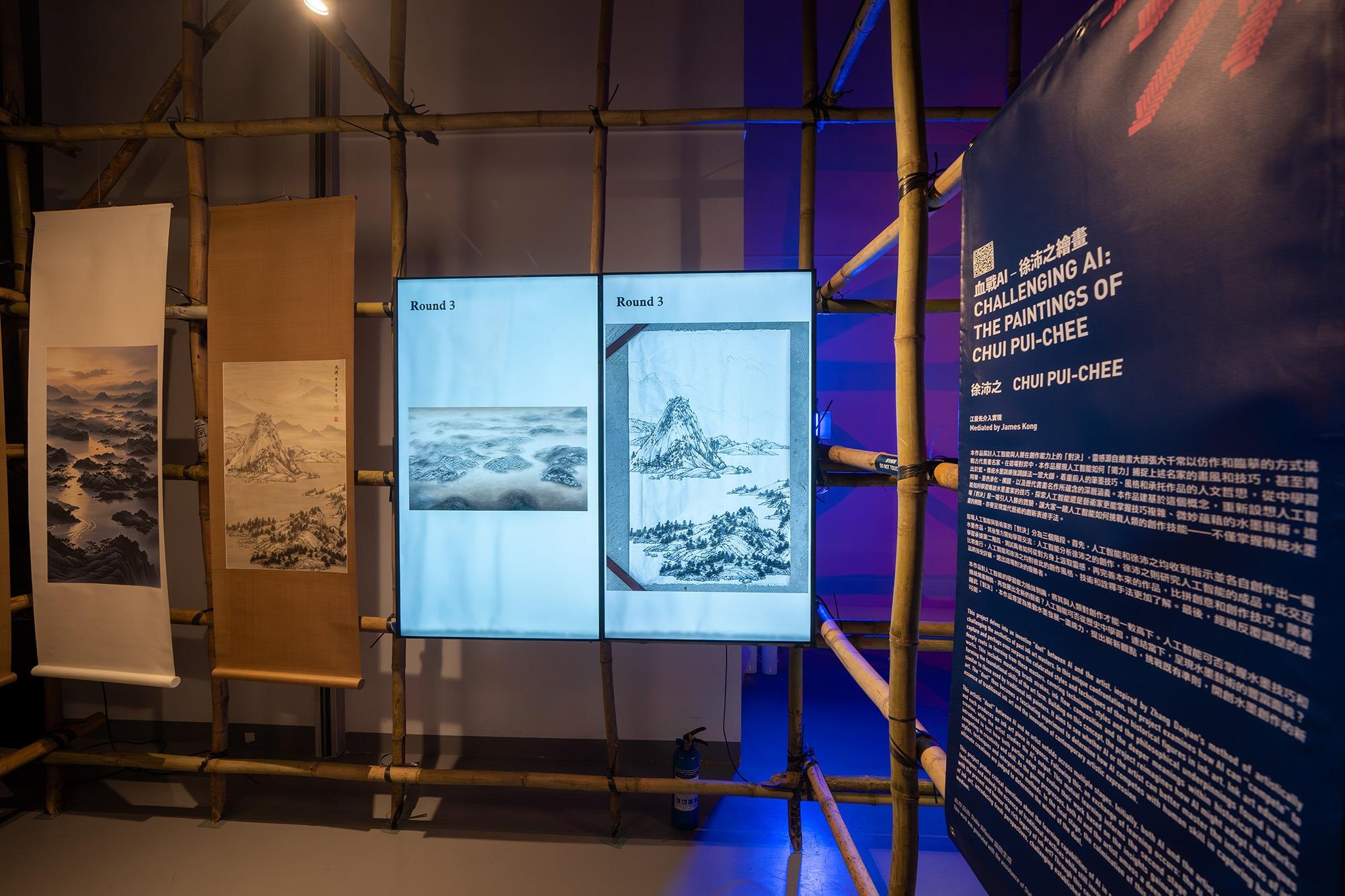 The exhibits include the results of a creative duel between calligrapher Chui Pui-chee and an AI tool. (PROVIDED TO CHINA DAILY)
The exhibits include the results of a creative duel between calligrapher Chui Pui-chee and an AI tool. (PROVIDED TO CHINA DAILY)
Also featured in Beyond the Singularity is academic and lyricist Chow Yiu-fai. Chow, who has published over 1,000 lyrical works over the last 35 years, used a machine-learning tool to compose new lyrics on the basis of his extensive repertoire. A second deep-learning technology was harnessed into “generating human-like synthetic singing”, based on an analysis of the artist’s singing and speech recordings.
This proved to be a tricky assignment for the AI tool involved, and not the least because of the “complex phonological system” followed in Cantonese speech, as Leung points out. “Such characteristics pose a unique set of challenges for AI to capture and authentically replicate.”
Ultimately, the extent to which AI can convincingly mimic human sounds probably matters less than questions about authorial intent and intervention that such investigations raise in their wake. “The experimentation with AI tools opens up a fascinating avenue of artistic inquiry,” Leung says. “I believe this is just the beginning of a broader trend among artists to embrace and explore the potential of AI technology in their creative processes.”
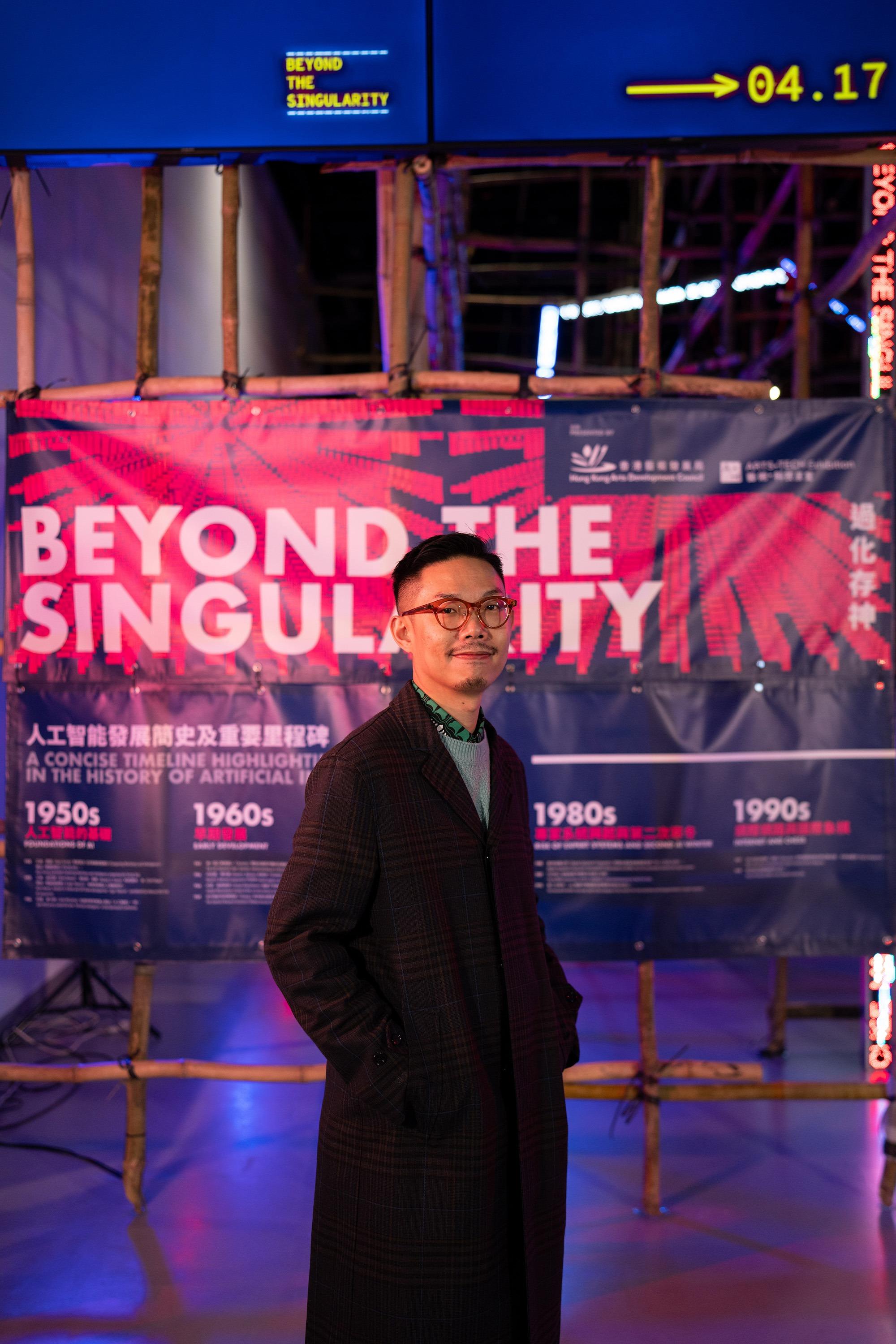 Beyond the Singularity curator Isaac Leung. (PROVIDED TO CHINA DAILY)
Beyond the Singularity curator Isaac Leung. (PROVIDED TO CHINA DAILY)
He mentions that each of the 13 artists participating in Beyond the Singularity brought their own distinctive approach to working with AI to the table. For example, AI Ha Ha “The Art World” by Mak2 (Mak Ying-tung) demonstrates the artist’s familiarity with the terrain. In this digital installation, Mak2 puts her own image at the center of constantly shifting AI-generated fictional environments, offering a satirical take on a young artist’s journey toward finding a toehold in the ruthless art market.
“Mak2’s use of fabricators suggests a comfort and readiness for an era where the artist’s physical involvement in crafting their work becomes less critical,” Leung says. “To her, AI is a tool that accentuates the conceptual over the manual, enabling artists to focus on concepts and rely on technology to materialize their visions.”
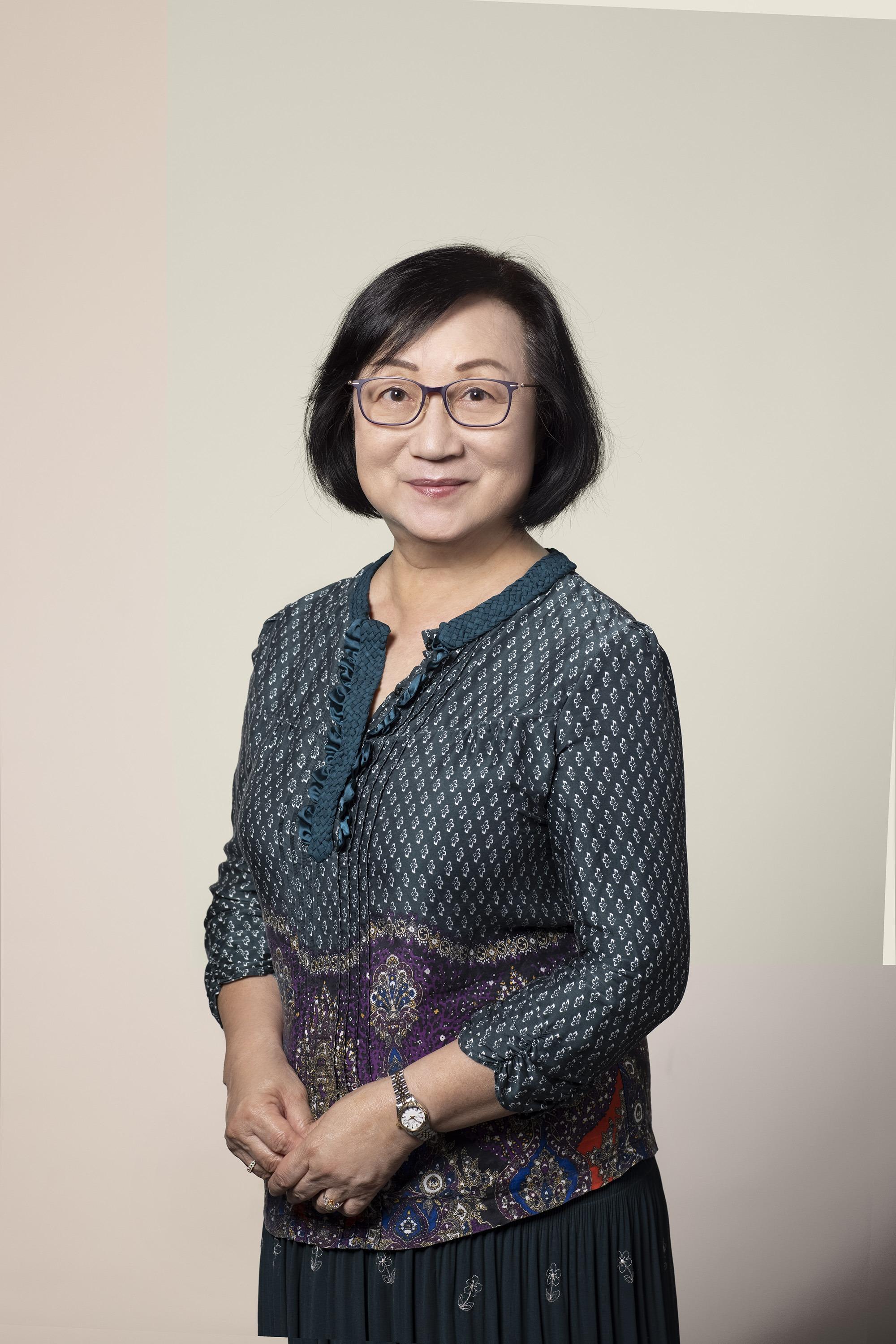 Hong Kong Arts Development Council Chief Executive Winsome Chow reveals that the third edition of the Arts • Tech exhibition series is now on the drawing board. (PROVIDED TO CHINA DAILY)
Hong Kong Arts Development Council Chief Executive Winsome Chow reveals that the third edition of the Arts • Tech exhibition series is now on the drawing board. (PROVIDED TO CHINA DAILY)
By contrast, calligrapher Chui Pui-chee “initiates a creative ‘duel’ between AI and human, drawing inspiration from Zhang Daqian’s (1899-1983) approach to challenging the aesthetics of the ink masters”.
Leung adds that “Chui’s project explores whether AI has the capacity to emulate and possibly excel in the styles and techniques of ink artists, including not just the physical skills like brushwork and composition, but also the philosophical essence imbued in their art”, finding “a gap in AI-generated ink art, which, despite technical proficiency, lacks the spiritual depth and symbolic significance uniquely contributed by human touch” in the process.
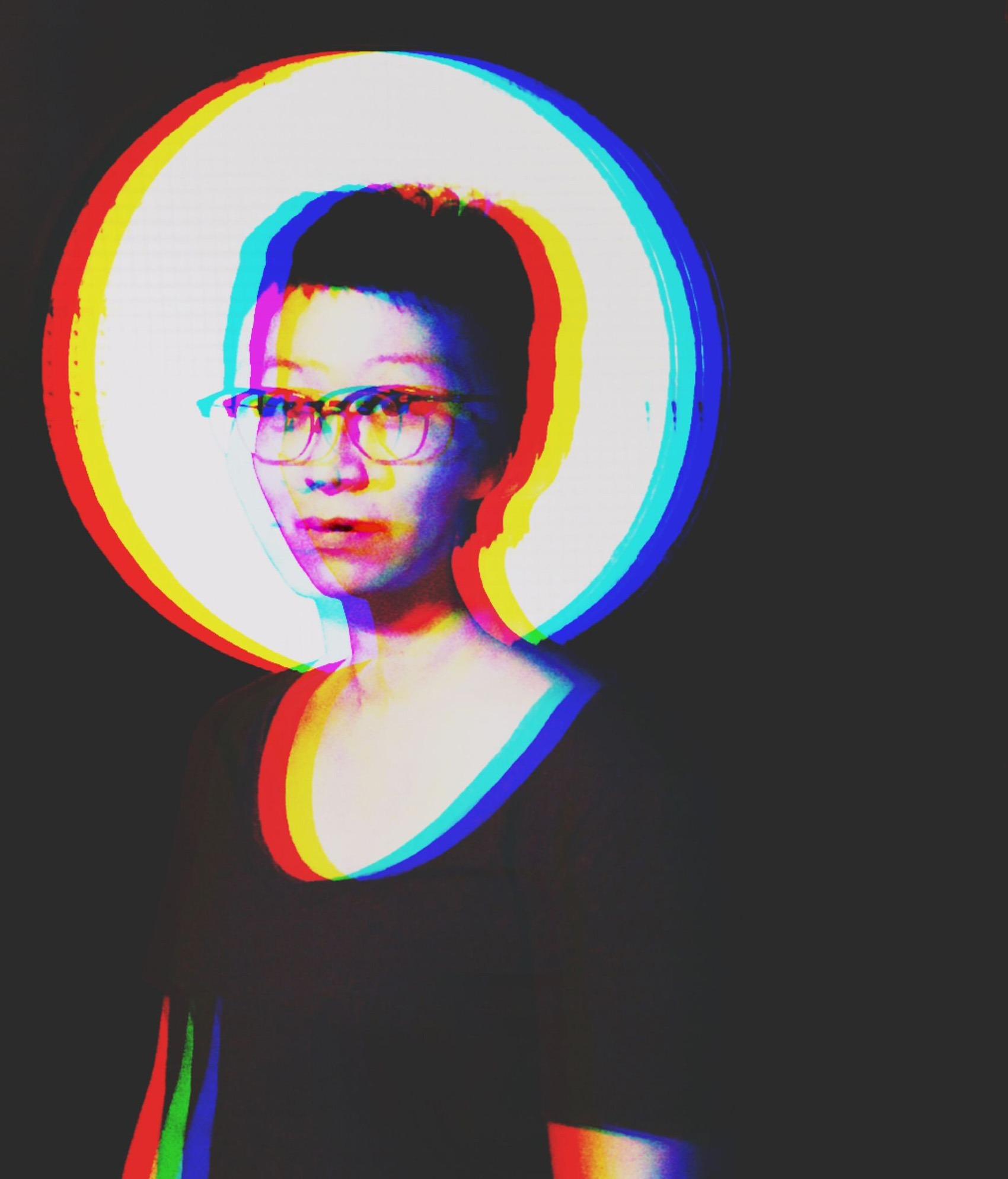 Make & Believe curator Orlean Lai; a viewer photographs a tunnel book installation, created by Ho Sin-tung. (PROVIDED TO CHINA DAILY)
Make & Believe curator Orlean Lai; a viewer photographs a tunnel book installation, created by Ho Sin-tung. (PROVIDED TO CHINA DAILY)
Stage craft
Also part of the Arts • Tech 2.0 series, Make & Believe takes the human factor out of a “live performance”. During the 30-minute show, two robotic arms caress and grow apart from each other on a slow-revolving stage, as a retro-model vacuum cleaner motor, with its suction duct chopped off, trotters around. This automated scene is set in a container-like space constructed inside the venue, F Hall in Tai Kwun, and can be viewed either through a beaded curtain, panels of dark gauze, or minuscule windows cut into the walls. Additionally, running curtains, hung from an automated truss, can come between the “stage” and the viewer’s sightline without warning.
While the robotic hands and the roaming vacuum cleaner motor seem to demonstrate, if somewhat creepily, characteristics that come across as anthropomorphic, the show’s curator and producer Orlean Lai says that’s not the point of Make & Believe. Rather, “we aim to expand perceptions of the objects’ ‘thing-ness’. If the experience gave you a sense of ‘life’ within the objects, I believe we succeeded in opening your sensitivity to their inner state as ‘things’ that are no longer mere objects”.
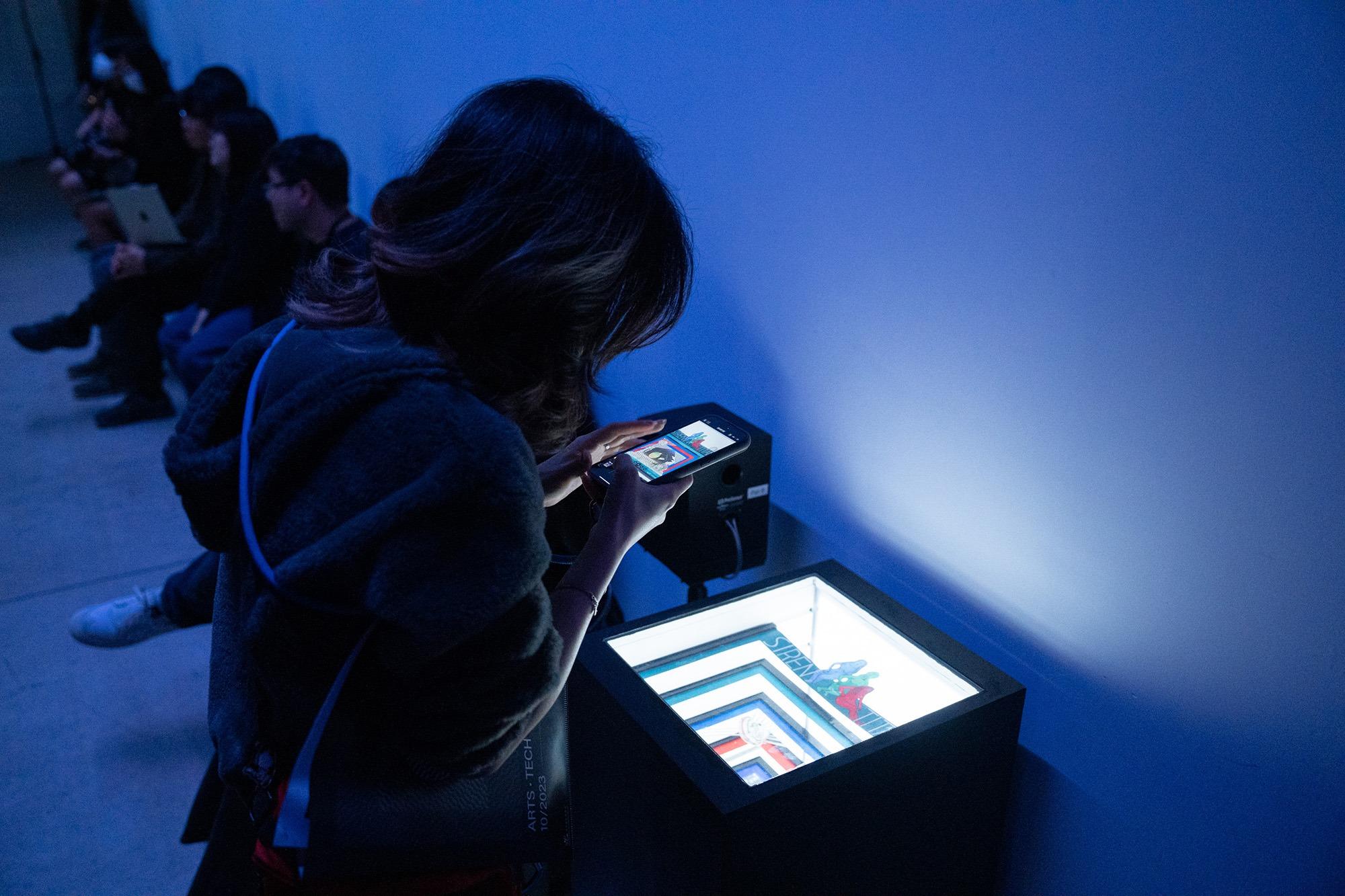 A scene from a “live performance” involving robotic arms; another tunnel book, inspired by a Kurt Vonnegut novel, viewed from up close. (PROVIDED TO CHINA DAILY)
A scene from a “live performance” involving robotic arms; another tunnel book, inspired by a Kurt Vonnegut novel, viewed from up close. (PROVIDED TO CHINA DAILY)
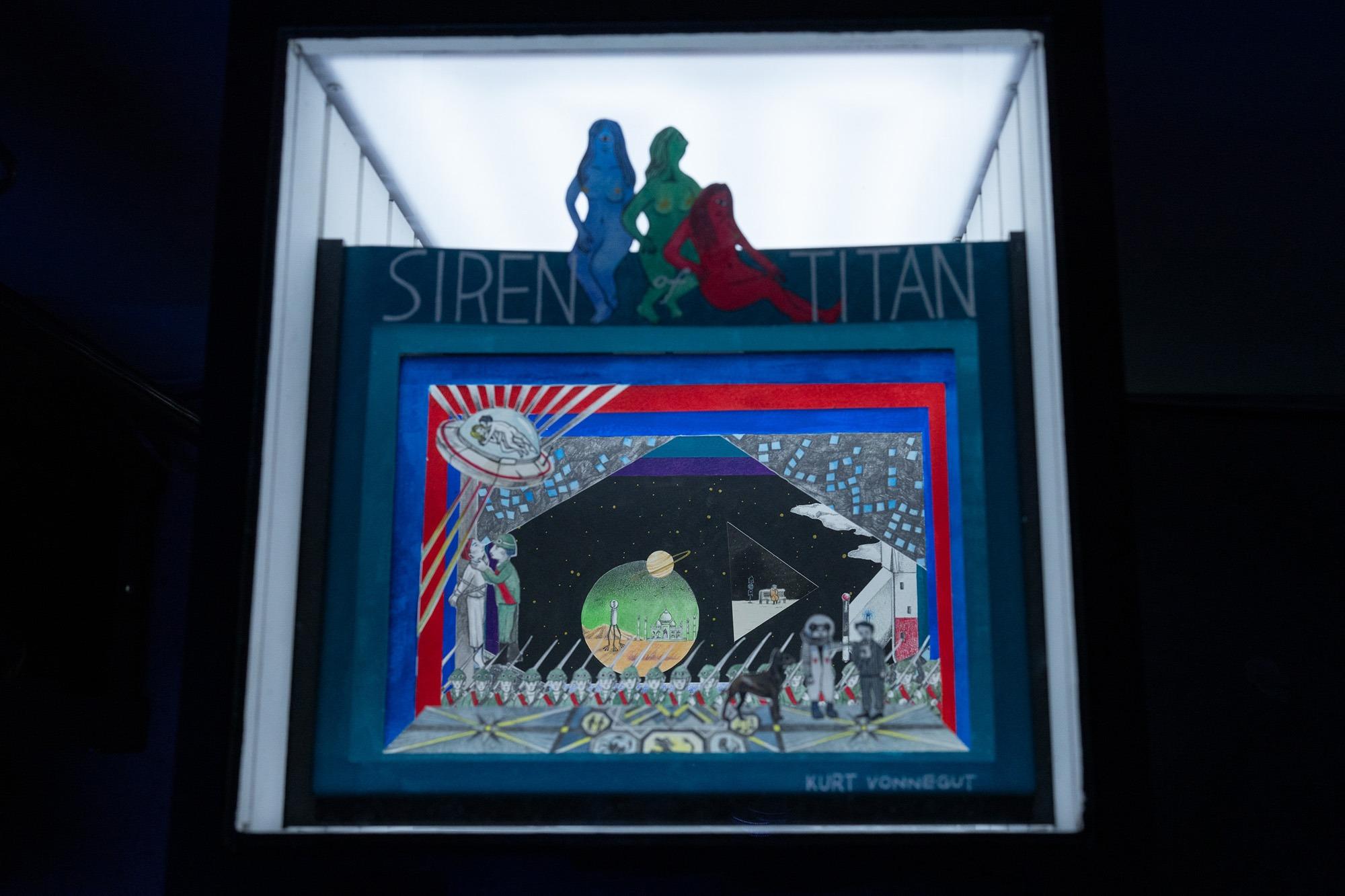 A scene from a “live performance” involving robotic arms; another tunnel book, inspired by a Kurt Vonnegut novel, viewed from up close. (PROVIDED TO CHINA DAILY)
A scene from a “live performance” involving robotic arms; another tunnel book, inspired by a Kurt Vonnegut novel, viewed from up close. (PROVIDED TO CHINA DAILY)
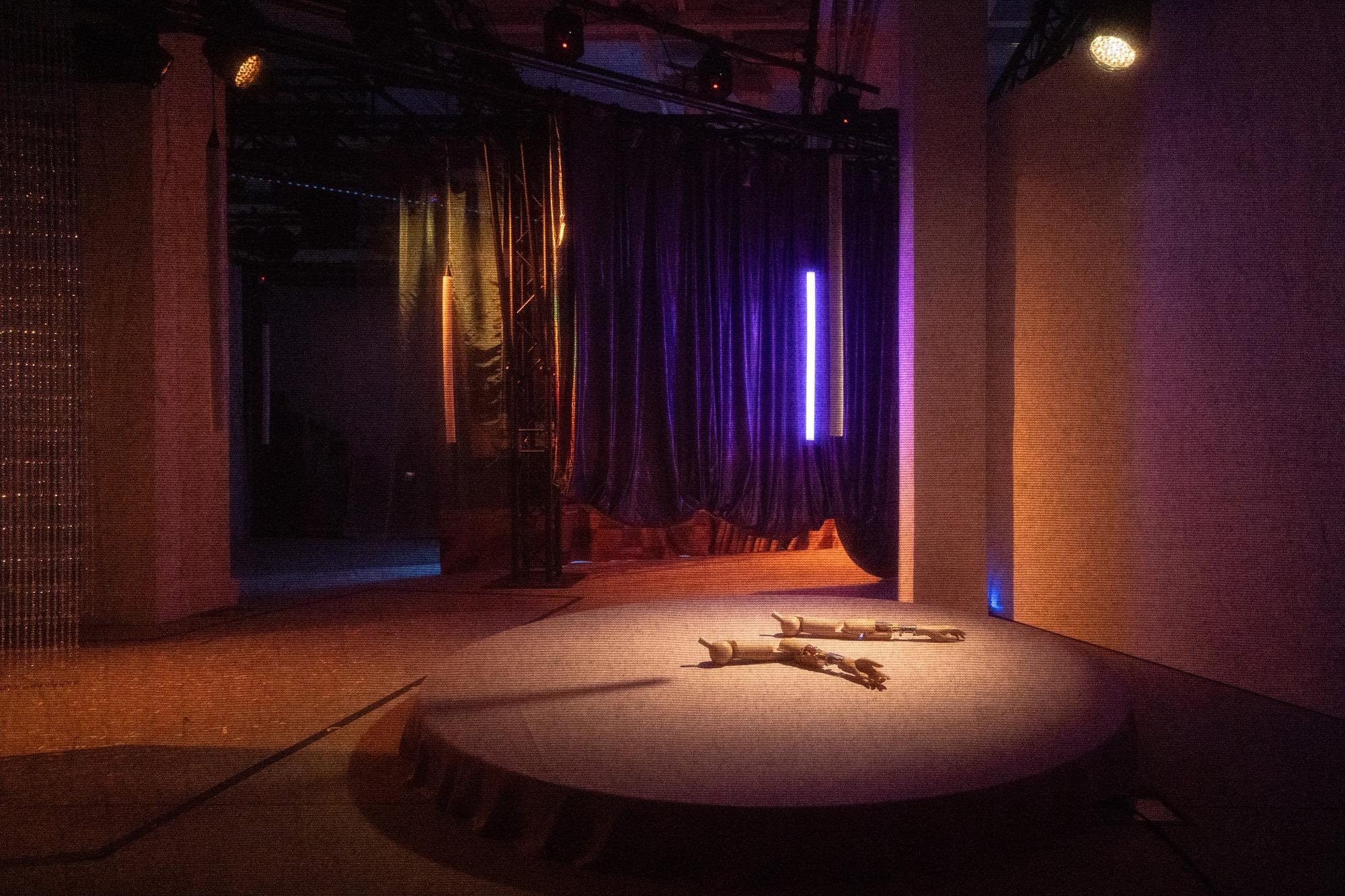 A scene from a “live performance” involving robotic arms; another tunnel book, inspired by a Kurt Vonnegut novel, viewed from up close. (PROVIDED TO CHINA DAILY)
A scene from a “live performance” involving robotic arms; another tunnel book, inspired by a Kurt Vonnegut novel, viewed from up close. (PROVIDED TO CHINA DAILY)
Ho Sin-tung’s story about an invisible man whose sense of identity is validated only after he connects with a blind masseur provides the thematic, and emotional, anchor of Make & Believe. A voiceover narrates four versions of this tale that invites audiences to reconsider the difference between perception and reality.
Ho is also the creator of the show’s tunnel books — installations with paper cutouts of figures and scenery arranged like a theatrical scene inside an illuminated rectangular column. Each of these scenes references characters who die in fictional works by James Joyce, Arundhati Roy, Kurt Vonnegut and Kenzaburo Oe.
Lai explains that Ho’s creations are meant to “subtly highlight our awareness that actors do not actually risk their lives for a performance”, and yet the performances work because of the audiences’ willingness to embrace fiction. The same idea informs Make & Believe in general, with the automated installations “operating like a performance continuing in the absence of live performers”.
Besides Ho, Lai’s collaborators on the show include mechanical installation makers Tung Wing-hong and Ng Tsz-kwan, scenographer Human Wu, music and soundscape designer Lam Lai, and lighting designer Lau Ming-hang.
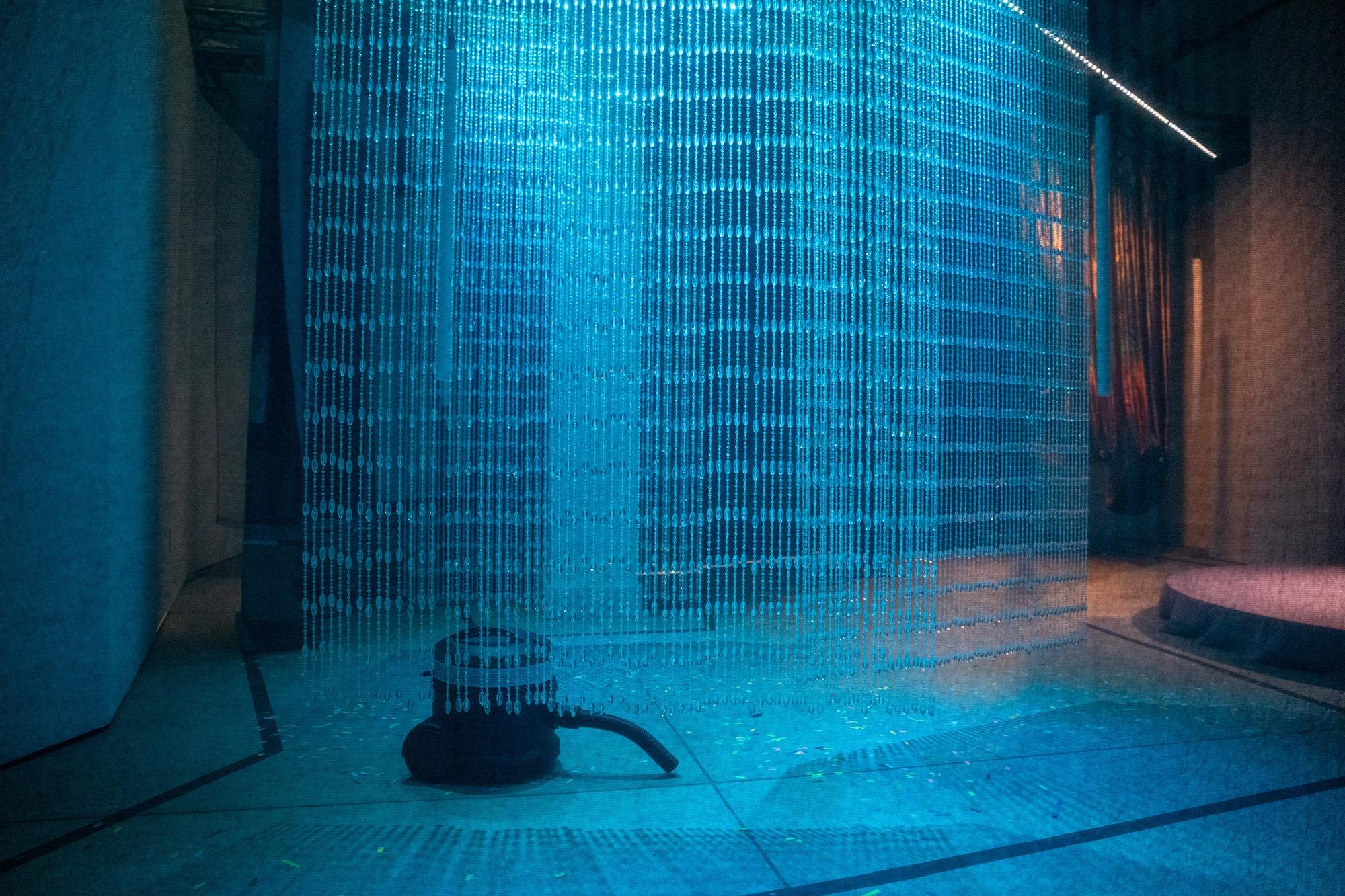 An automated vintage vacuum cleaner motor has a prominent role in the show. (PROVIDED TO CHINA DAILY)
An automated vintage vacuum cleaner motor has a prominent role in the show. (PROVIDED TO CHINA DAILY)
The main aim of staging Make & Believe, says its curator, is to “emphasize the integration of all elements and media adopted by the different artists in order to craft an immersive total art experience” akin to watching a piece of theater. “We expanded this performative and theatrical practice, adapting it into an exhibition format. By connecting different sensory elements, we wanted viewers to unconsciously form their own personalized, synesthetic impressions and interpretations.”
If You Go
Beyond the Singularity
Dates: Through April 7
Venue: UG/F Landmark South, 39 Yip Kan Street, Wong Chuk Hang
arts-tech.hk/en/exhibition/beyond-the-singularity/


